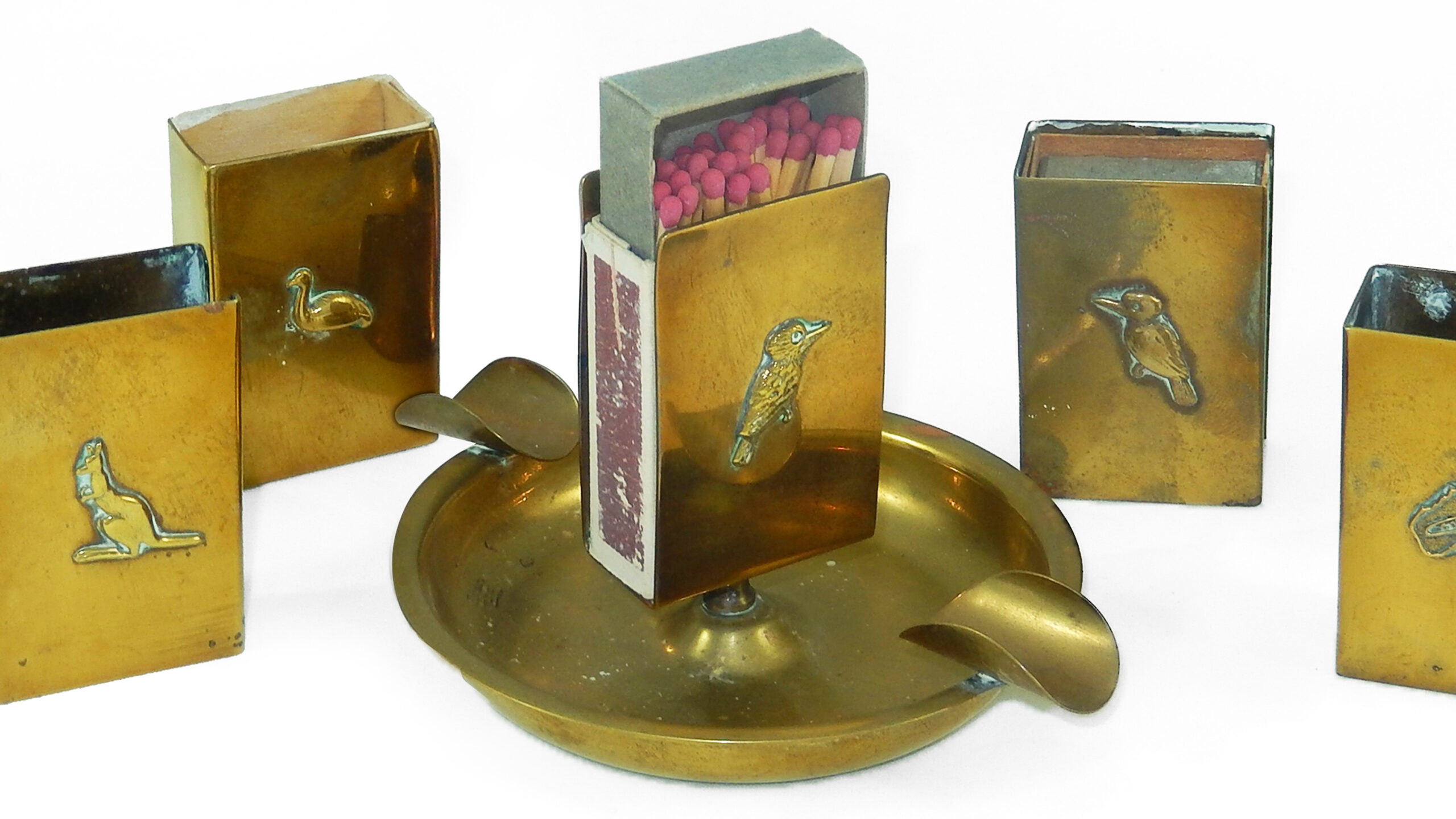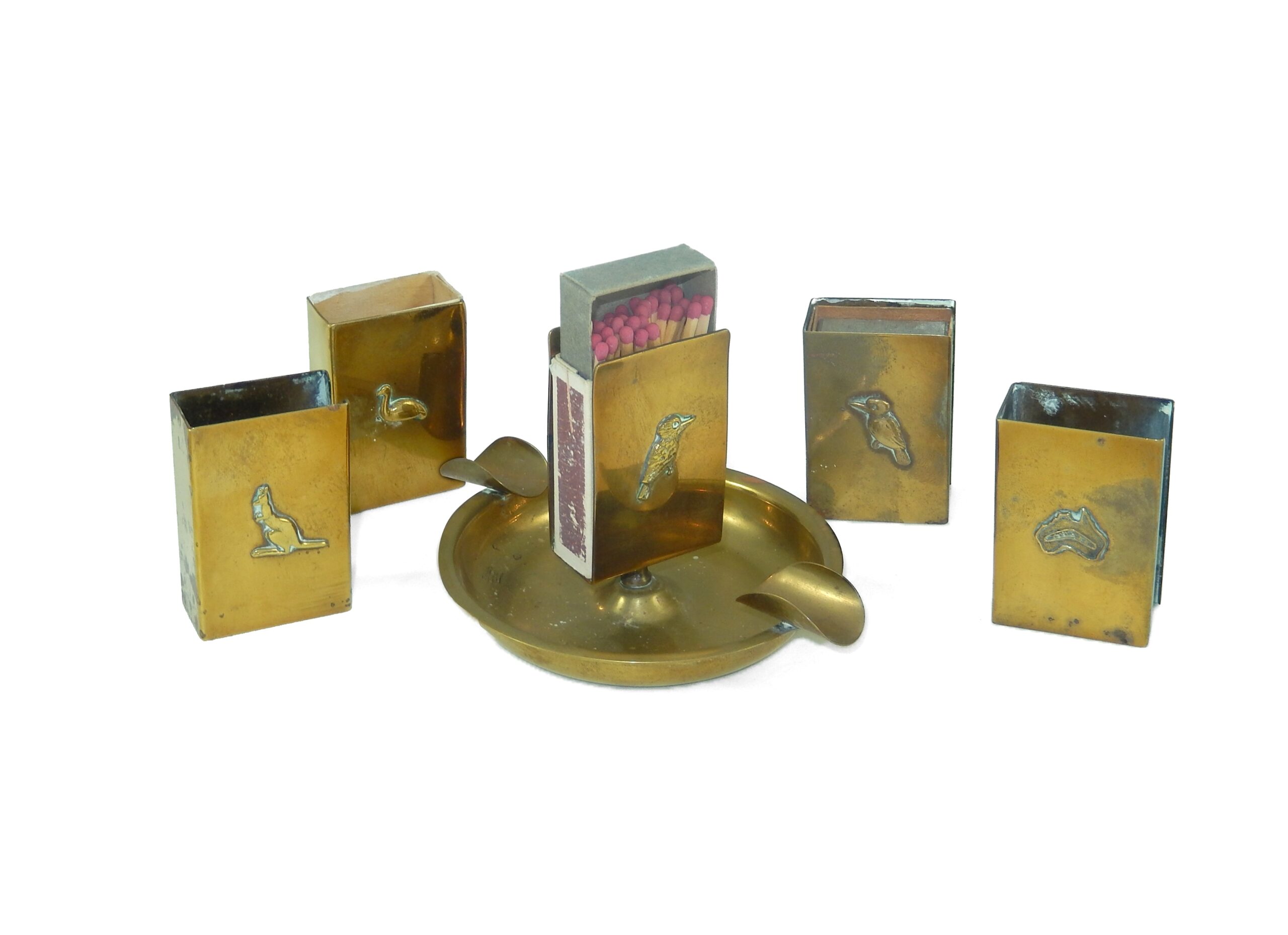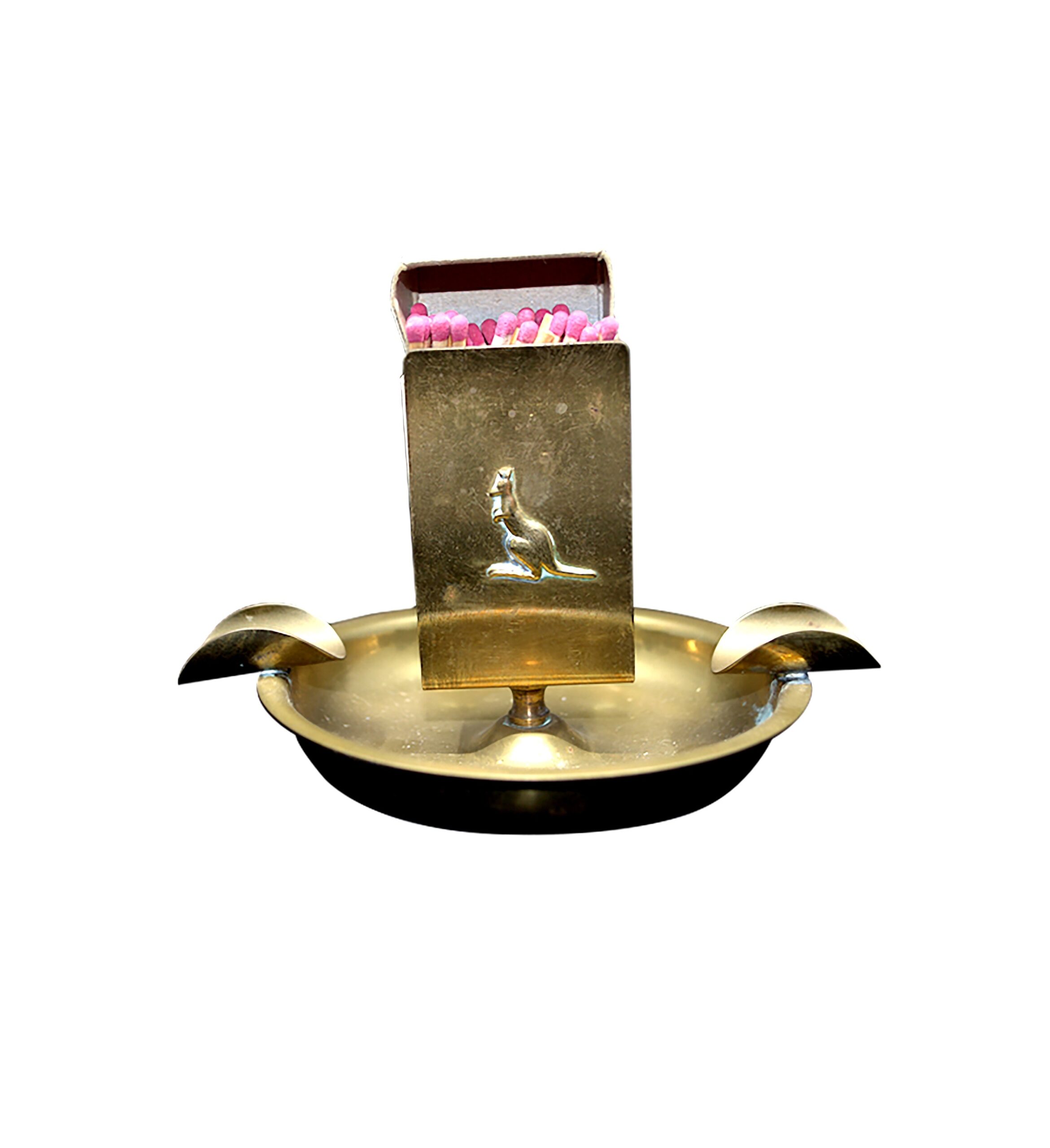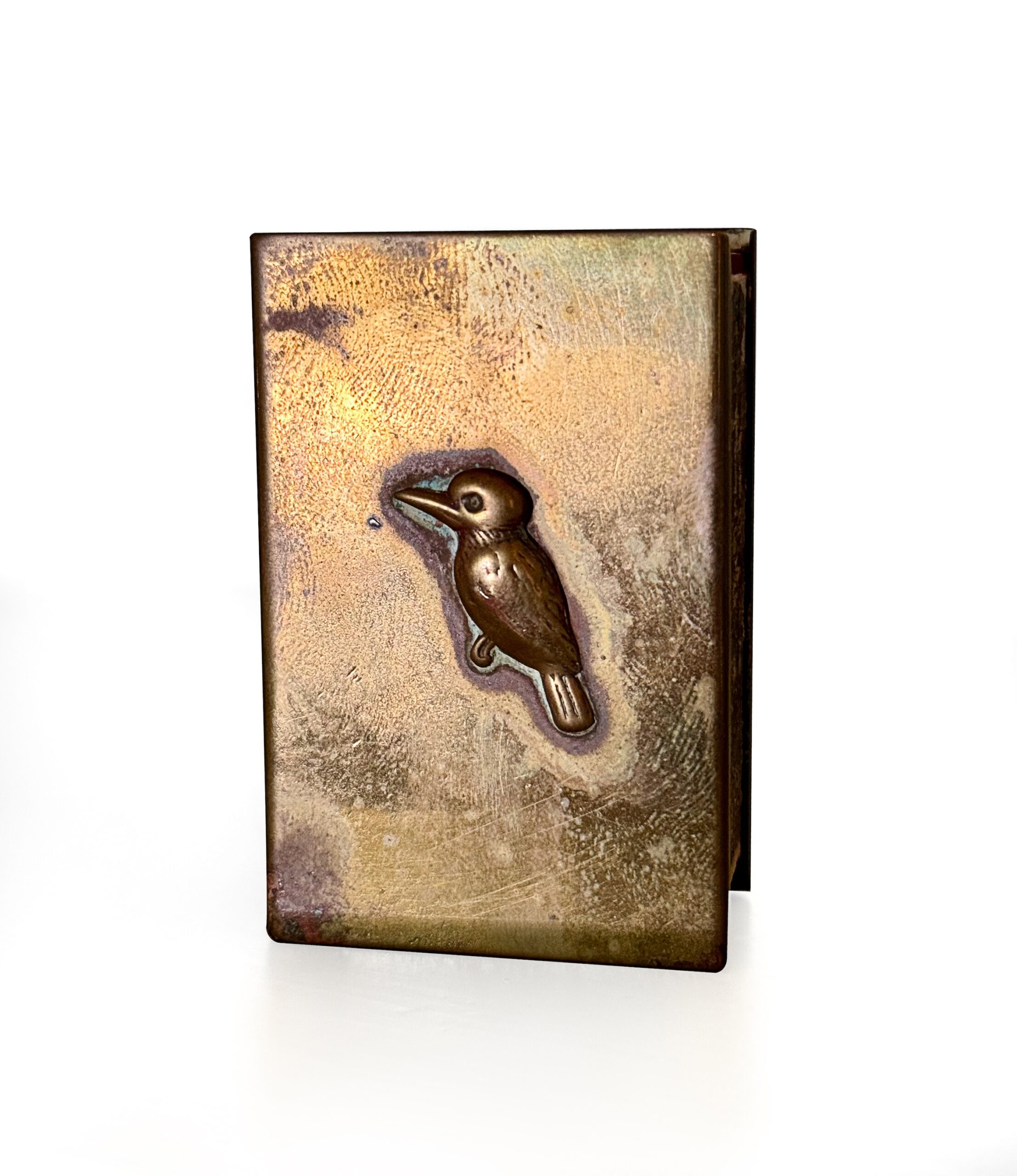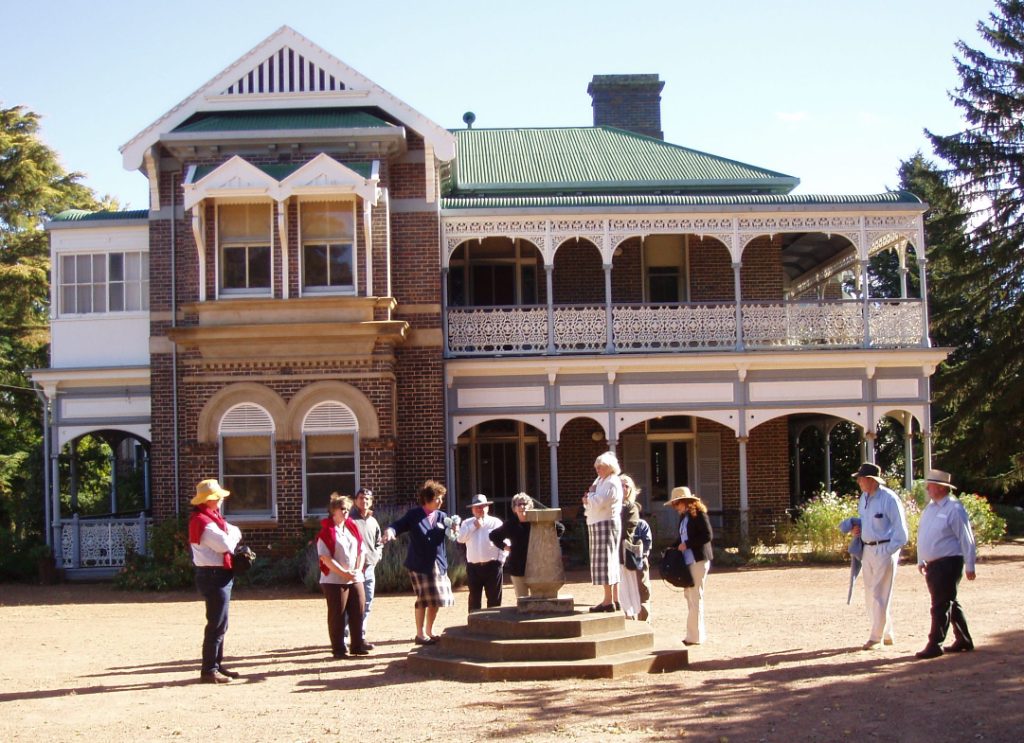Ashes of War
Trench Art From the Western Front to Armidale
Four brass matchbox covers and an ashtray (c. 1916-1918) held in Elsie White’s bedroom at Saumarez Homestead in Armidale are a small reminder of a generation who lived and fought through World War One. They are part of a disparate collection of objects categorised as ‘Trench Art,’ an object made by people from any material associated with armed conflict or its consequences.
Most soldiers were smokers and used cigarettes as cheap and quick relief from their harrowing circumstances. A matchbox cover could be made by cutting battlefield scrap metal into shape and folding them over to leave open sides in which to slide the matchbox. An ordinary soldier could engrave simple designs and inscriptions. The Saumarez ashtray and matchboxes with Australian motifs of kangaroo, kookaburra, emu, and map of Australia were probably made behind the front lines by Australian soldiers, some with blacksmithing skills.
They were likely brought back to Saumarez by Lieutenant-Colonel Harold Fletcher White, the only member of the family to serve on the front line. He held various commands from 1916 to 1919 including with the 33rd Battalion of the Australian Imperial Force which was raised in his home district of New England. His mother and sisters also volunteered in a civilian nursing unit for returned wounded in New England.
Thankfully, Harold returned home safe to his wife, Evelyn, and his family who kept the objects until Saumarez was gifted to the National Trust of Australia (NSW) in 1985-6.


